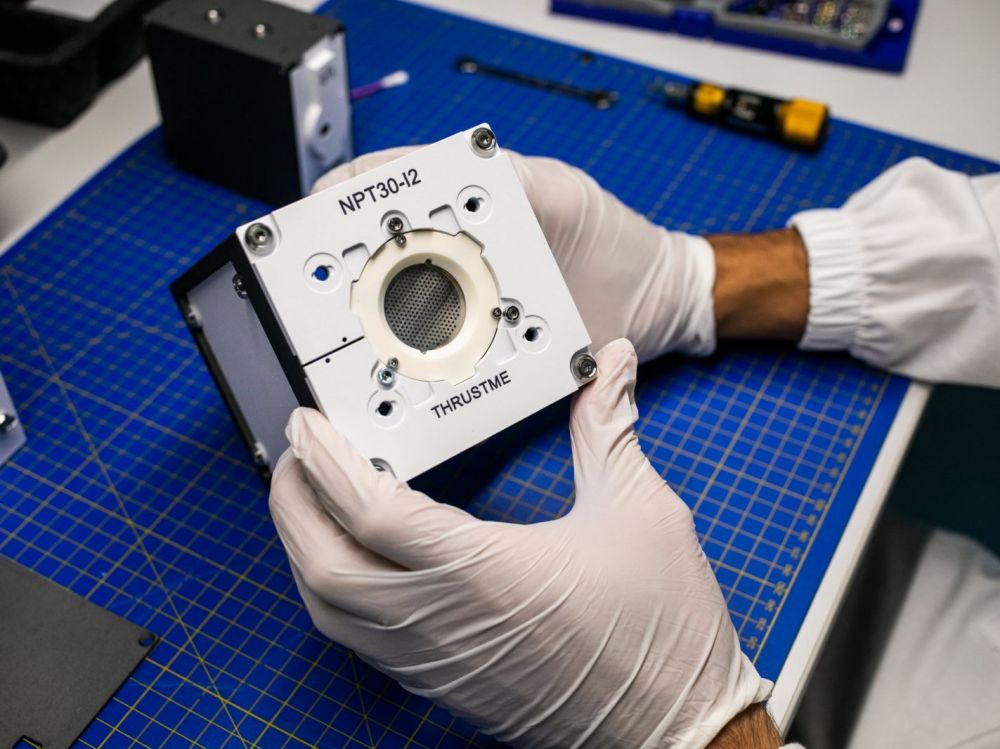A cubesat equipped with an innovative electric thruster, developed by Paris Region startup ThrustMe, is paving the way for economical and sustainable constellations.
"Iodine changes the rules »
A Chinese Long March 6 light launcher launched on 6 November placed thirteen payloads into low earth orbit.
Among them was Beihangkongshi 1, a technology demonstrator for automatic aircraft tracking, developed by the Chinese-Luxembourg startup Spacety, which also plans to deploy a Synthetic-Aperture Radar imaging constellation.
Beihangkongshi 1 is a 12U CubeSat. It is above all the world's first satellite equipped with an electric iodine Ion, called NPT30-I2.
The latter was designed and manufactured by ThrustMe, a company created in 2017 based on research conducted at the Plasma Physics Laboratory shared by the CNRS and the École Polytechnique in Palaiseau, and now based in Verrières-le-Buisson, also in the Essonne region.
« Iodine is changing the rules," says Ane Aanesland, co-founder and president of ThrustMe. Thanks to this mission, we will be able to demonstrate this for the first time.
Life size test
The world premiere on November 6 follows a previous collaboration between ThrustMe and Spacety on the Xiaoxiang 1-08 CubeSat, just one year ago, which was equipped with a similar system.
Last year, we demonstrated key technologies for the storage, delivery and sublimation of iodine on Spacety's Xiaoxiang 1-08 satellite, as part of an in-orbit demonstration of our cold iodine gas thruster, I2T5," said Dmytro Raflaskyi, ThrustMe's CTO. This time we will test the full capability of our NPT30-I2 electric iodine propulsion system and perform a number of advanced orbital manoeuvres. »

